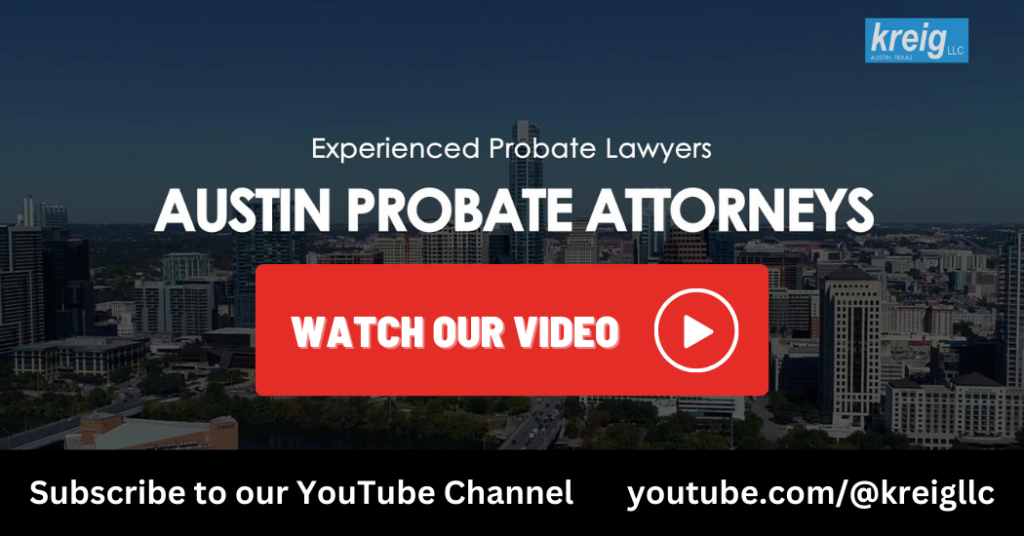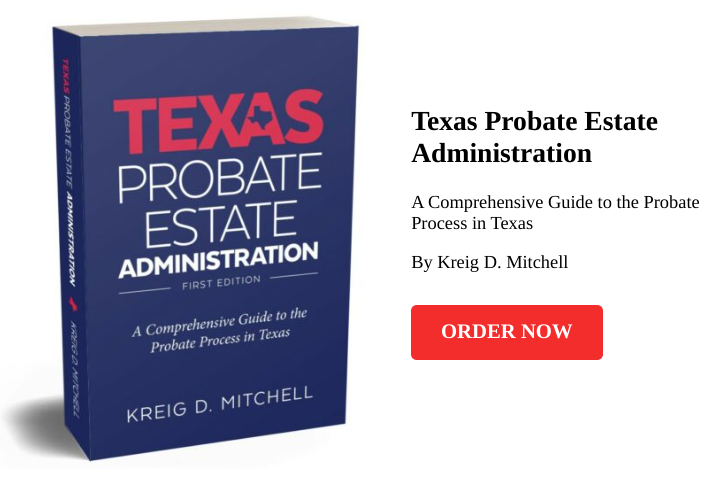When a loved one dies leaving a will, the family faces the task of settling the estate. Someone must gather the decedent’s assets, pay debts and taxes, and distribute property to beneficiaries. These tasks cannot be accomplished without legal authority. The personal representative named in the will has no power to act until a probate court issues letters testamentary.
The probate process begins with filing an application in the appropriate court. The application must contain specific information about the decedent, the estate, and the proposed personal representative. After the application is filed, notice must be given to interested parties. A court hearing follows. If everything is in order, the court admits the will to probate and appoints the personal representative.
This process raises practical questions for families administering estates. What information must be included in the probate application? How is notice given to heirs and beneficiaries? What happens at the court hearing? What testimony must be presented to admit a will to probate?
Understanding the steps involved in filing a probate application and obtaining letters testamentary helps families navigate Texas probate administration more effectively.
Facts of a Typical Uncontested Probate
Let’s consider a hypothetical situation involving a John Smith. Assume John Smith died on March 15, 2024, in Austin, Travis County, Texas, at the age of 72. John was a lifelong resident of Travis County. He was married to Mary Smith at the time of his death. John and Mary had two adult children.
John executed a last will and testament on January 10, 2020. The will named Mary as the independent executrix to serve without bond. The will left John’s entire estate to Mary. The will provided that if Mary predeceased John, the estate would be divided equally between their two children. No child was born to or adopted by John after the date of the will. John’s marriage to Mary was never dissolved after the will was made.
John owned a home in Austin, bank accounts, investment accounts, and personal property at the time of his death. The approximate value of his estate was $850,000. John had no significant debts other than routine monthly bills. The will has never been revoked.
Mary filed an application to probate John’s will and to be appointed independent executrix on April 10, 2024. The application was filed in the Probate Court for Travis County. All heirs consented to the application. The court set the matter for hearing on May 8, 2024.
Preparing the Probate Application Under Texas Law
After identifying the probate court that can hear the case, the next step is to file the application with the county clerk to start the probate process. The application is the legal document that provides the basic information and requests that the personal representative be appointed. The contents of the application differ based on whether the decedent had a will or did not have a will and whether the probate will be handled as a dependent or independent administration.
At a minimum, the application should identify the decedent, state whether there was a will or no will, state where the decedent was domiciled at the time of death, and state the date of death. The application must identify the property owned at the time of death and the approximate value thereof. It must identify the decedent’s family relationships (such as marriage or divorce status and children) and heirs and their interests in the estate. The application should provide the name and information for the personal representative and state the reason why an administration is needed.
Once complete, the application is filed with the county clerk’s office that handles probate cases. The filing is made using one of several electronic filing services. Upon receipt, the county clerk will assign a docket number to the case and record it in the clerk’s records.
If there was a will, the original unstapled will should be included with the application. If there are multiple wills or codicils (which are written supplements to wills), they may also need to be included. If these documents are not provided with the application, they should be provided to the clerk within three days of the filing of the application.
Citation and Notice to Interested Parties
The application must include citation language. The term “citation” means notice to those with an interest in the estate. The citation alerts all parties having an interest in the probate to appear in the case if they wish to do so. The county clerk will issue the citation pursuant to Texas Estates Code Section 51.001.
The county clerk issues a citation to all interested parties of the estate. The citation is served by posting at the county courthouse. The citation must state that the application has been filed, the nature of the application, the decedent’s name, the applicant’s name, the time when the court will act on the application, and that any person interested in the estate may appear at the time stated in the citation to contest the application.
Notice of the application has to be provided to the heirs. Alternatively, the heirs can file an affidavit with the county clerk consenting to the application. In uncontested cases where all heirs consent, the process typically moves more quickly than when heirs must be formally notified.
Scheduling the Court Hearing
Having filed the application and after the clerk has issued citation and the citation return date has passed, the next step is to schedule the court hearing. Practices vary from court to court on how to schedule the hearing. Generally, this involves calling the assigned probate court and asking to be put on the court’s hearing calendar. Most courts have uncontested hearings on a set day or days of the week.
The time between filing the application and the hearing date allows interested parties to review the application and file any objections. In uncontested cases where all heirs have consented to the application, objections are unlikely. The hearing can often be scheduled relatively quickly.
What Happens at the Court Hearing?
The court hearing to admit a will to probate is typically routine and short in uncontested cases. The person seeking to be appointed has the burden to establish the validity of the will and that the will should be probated. To meet this burden, it may be necessary to present records to the court. But in many uncontested cases, the primary evidence consists of testimony that is elicited by the probate attorney.
The testimony is taken in court and under oath. The line of questioning typically covers the following topics: identifying the witness and their relationship to the decedent, confirming the decedent’s death date and county of residence, verifying that the application was timely filed, confirming that the decedent died testate with a valid will, verifying that the will was never revoked, confirming information about the decedent’s family circumstances, and establishing that the proposed personal representative is qualified and entitled to appointment.
The attorney will show the witness a copy of the will and ask if they recognize it and the decedent’s signature. The witness confirms that to the best of their knowledge, the will was never revoked. The witness verifies information about whether any children were born or adopted after the will was executed and whether any marriage was dissolved after the will was made. The witness confirms that they are qualified to serve and that the will names them to serve as independent executor without bond.
If all goes as planned, the judge will then admit the will to probate and agree to sign an order admitting the will to probate. With most probate courts, the applicant is expected to provide the court with the order for the judge to sign.
Taking the Oath of Office
The oath can be sworn to in court or by filing a sworn statement with the county clerk. Practices vary from one county to another. The language of the oath typically states that the person swears the writing offered for probate is the last will of the decedent, so far as they know or believe, and that they will well and truly perform all duties as independent executor of the will and estate.
The exact language varies by county. The county clerk will require the oath be filed prior to issuing letters testamentary. This oath is an important step because it marks the formal acceptance of fiduciary duties by the personal representative.
Posting Bond When Required
Before a personal representative is appointed, the probate court may require a bond be posted. The bond helps ensure that the personal representative does not abscond with or mismanage estate property to the detriment of creditors and heirs.
A bond is not required if there is a will and the will waives the requirement of a bond for the person who is appointed. A bond is also not required for corporate fiduciaries who serve as the personal representative. Absent an express waiver in a valid will or a corporate fiduciary, the probate court may require a bond be filed before it appoints the personal representative.
Whether a bond will be required depends on whether there are unsecured creditors of the estate who will not waive the bond requirement, whether all of the heirs are willing to agree in writing to waive the bond requirement, and the practices of the probate court for the issuance of bonds. The probate court may also require a bond if there is a complaint filed alleging that the executor is wasting, mismanaging, or misapplying the estate.
When required, the bond has to be filed with the probate clerk within 21 days after letters testamentary are issued. The cost of a probate bond varies based on the amount that is the subject of the bond. The probate court has the discretion to set the amount of the bond. The general rule is that the bond should be set in an amount to protect the estate and the estate’s creditors.
There are quite a few bond companies that offer probate bonds in Texas. Rates vary widely. A bond of $10,000 may only cost $100 whereas a bond of $1,000,000 may cost $3,000 or more. The bond company sets the rate based on the complexity of the estate, the credit of the personal representative, and the assets in the estate. It may turn out that even if the personal representative is otherwise qualified, they may not be able to serve if they cannot qualify for or afford to post a bond. This is why most wills specifically waive the requirement of a bond.
Once appointed, the personal representative can use estate assets to satisfy or to reduce the amount of the bond fees charged by the bond company. The bond fees are usually due annually. This can encourage the personal representative to work diligently to close the estate.
Obtaining Letters Testamentary
Letters testamentary give the personal representative the legal authority to administer the decedent’s probate estate. The letters are a legal document. The letters provide proof of appointment and qualification of the personal representative of an estate and the date of qualification. They serve as proof of the personal representative’s power to act for the estate.
Most banks and financial institutions require a copy of the letters before giving the personal representative information or access to the decedent’s accounts. Insurance companies, brokerage firms, and other entities holding estate assets will also require letters testamentary before releasing assets or information to the personal representative.
The letters are officially issued by the county clerk. The county clerk charges a small fee for preparing the forms. The personal representative will want to pay for multiple original letters, as banks and other institutions will expect an original rather than a copy. Most personal representatives obtain between two and ten original letters testamentary depending on the number of institutions they must contact.
The Takeaway
The Texas probate process begins with filing an application that contains specific information about the decedent, the estate, and the proposed personal representative. Notice must be given to interested parties through citation issued by the county clerk. An uncontested probate hearing typically involves brief testimony establishing the validity of the will and the qualifications of the proposed personal representative. The personal representative must take an oath and may be required to post a bond unless the will waives the bond requirement. Once these steps are completed, the county clerk issues letters testamentary that give the personal representative legal authority to administer the estate. Understanding these procedural requirements helps families navigate the initial stages of Texas probate administration more effectively and ensures that the personal representative obtains the authority needed to fulfill their duties to the estate and its beneficiaries.
Do you need help with a probate matter in Austin or the surrounding area? We are Austin probate attorneys. We help clients navigate the probate process. Call today for a free confidential consultation, 512-273-7444.
Our Austin Probate Attorneys provide a full range of probate services to our clients, including helping with probate administrations. Affordable rates, fixed fees, and payment plans are available. We provide step-by-step instructions, guidance, checklists, and more for completing the probate process. We have years of combined experience we can use to support and guide you with probate and estate matters. Call us today for a FREE attorney consultation.
Disclaimer
The content of this website is for informational purposes only and should not be construed as legal advice. The information presented may not apply to your situation and should not be acted upon without consulting a qualified probate attorney. We encourage you to seek the advice of a competent attorney with any legal questions you may have.




